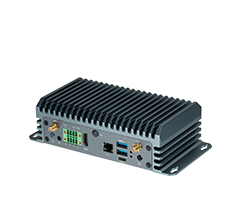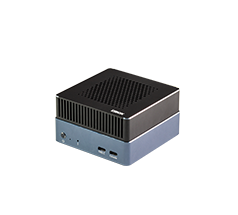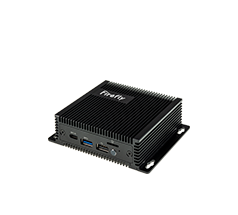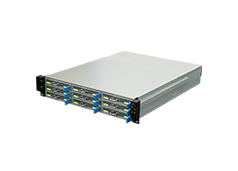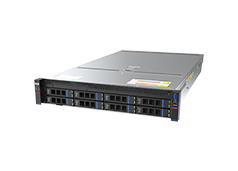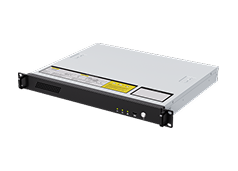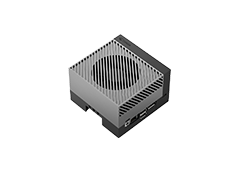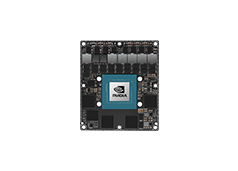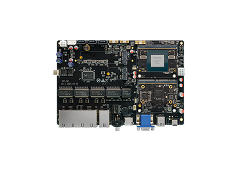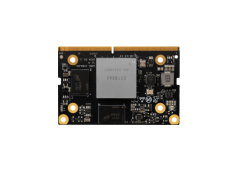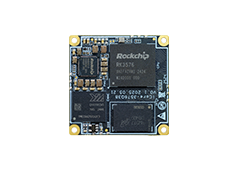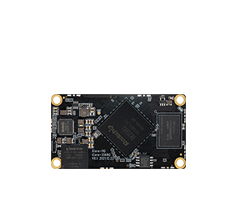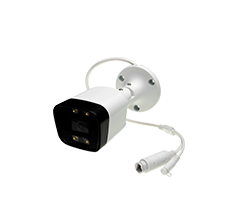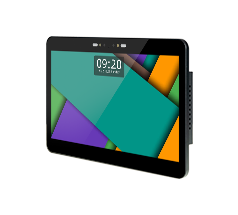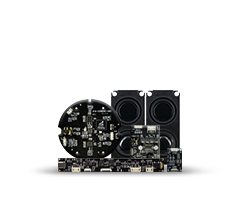PWM
Update time:2018-04-17 Views:2559
Firefly-RK3128 development board has 4 PWMs, namely PWM0 ~ PWM3:
PWM0/GPIO0_D2: exported in the extension board
PWM1/GPIO0_D3: used as AUX_DET signal internally
PWM2/GPIO0_D4: used as RTC_INT signal internally
PWM3: used by infrared transceivers
This article describes how to configure and use PWM.
The PWM driver file of FirePrime is:
kernel/drivers/pwm/pwm-rockchip.c
Configuration steps
You can follow these steps to finish the PWM configuration.
Create PWM DTS Node
PWM device nodes are defined in file kernel/arch/arm/boot/dts/rk312x.dtsi:
pwm0: pwm@20050000 {compatible = "rockchip,rk-pwm";reg = <0x20050000 0x10>;#pwm-cells = <2>;pinctrl-names = "default";pinctrl-0 = <&pwm0_pin>;clocks = <&clk_gates7 10>;clock-names = "pclk_pwm";status = "disabled";};
pwm1: pwm@20050010 {compatible = "rockchip,rk-pwm";reg = <0x20050010 0x10>;#pwm-cells = <2>;pinctrl-names = "default";pinctrl-0 = <&pwm1_pin>;clocks = <&clk_gates7 10>;clock-names = "pclk_pwm";status = "disabled";};
pwm2: pwm@20050020 {compatible = "rockchip,rk-pwm";reg = <0x20050020 0x10>;#pwm-cells = <2>;pinctrl-names = "default";pinctrl-0 = <&pwm2_pin>;clocks = <&clk_gates7 10>;clock-names = "pclk_pwm";status = "disabled";};
pwm3: pwm@20050030 {compatible = "rockchip,rk-pwm";reg = <0x20050030 0x10>;#pwm-cells = <2>;pinctrl-names = "default";pinctrl-0 = <&pwm3_pin>;clocks = <&clk_gates7 10>;clock-names = "pclk_pwm";status = "disabled";};
remotectl: pwm@20050030 {compatible = "rockchip,remotectl-pwm";reg = <0x20050030 0x10>;#pwm-cells = <2>;pinctrl-names = "default";pinctrl-0 = <&pwm3_pin>;clocks = <&clk_gates7 10>;clock-names = "pclk_pwm";remote_pwm_id = <3>;interrupts = <GIC_SPI 30 IRQ_TYPE_LEVEL_HIGH>;status = "okay";};To use PWM0, you need to add to file kernel/arch/arm/boot/dts/rk3128-fireprime.dts:
&pwm0 {
status = "okay";
};
Configure PWM driver
The PWM driver is in file kernel/drivers/pwm/pwm-rockchip.c
Control PWM Device
Now you can use the PWM node created above to control devices, as shown in the following steps:
(1). Include the pwm.h file
#include <linux/pwm.h>
This file includes the API functions of PWM.
(2). Request PWM.
You can use the pwm_request function to request the PWM device. For example:
struct pwm_device * pwm0=NULL;pwm0= pwm_request(0, “backlight-pwm”);
See The API of PWM device for more detail of this function.
(3). Set PWM configuration
You can use the function pwm_config to set the PWM configuration. For example:
pwm_config(pwm0, 500000, 1000000);
See The API of PWM device for more detail of this function.
(4). Enable PWM
Then you start the pwm device using the pwm_enable function. For example:
int pwm_enable(struct pwm_device *pwm);
See The API of PWM device for more detail of this function.
The API of PWM device
/** * pwm_request() - request a PWM device * @pwm_id: global PWM device index * @label: PWM device label * * This function is deprecated, use pwm_get() instead. */struct pwm_device *pwm_request(int pwm_id, const char *label);
/** * pwm_free() - free a PWM device * @pwm: PWM device * * This function is deprecated, use pwm_put() instead. */void pwm_free(struct pwm_device *pwm);
/** * pwm_config() - change a PWM device configuration * @pwm: PWM device * @duty_ns: "on" time (in nanoseconds) * @period_ns: duration (in nanoseconds) of one cycle */int pwm_config(struct pwm_device *pwm, int duty_ns, int period_ns);
/** * pwm_enable() - start a PWM output toggling * @pwm: PWM device */int pwm_enable(struct pwm_device *pwm);
/** * pwm_disable() - stop a PWM output toggling * @pwm: PWM device */void pwm_disable(struct pwm_device *pwm);


